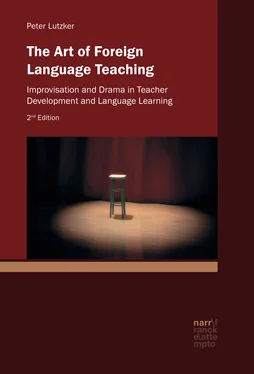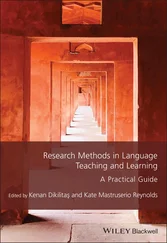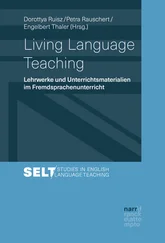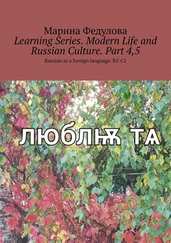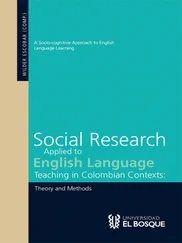2.2 Expectations and Realities
It can be seen as characteristic of a broad spectrum of contemporary educational thinking, that in-service education has come to be seen as an essential component in addressing educational problems and issues. This position can also be seen in a societal context in which a recognition of the critical importance of lifelong learning has become prevalent in all occupations. In considering the dimensions and rapidity of the changes occurring in most professions including language teaching, it has become an almost unquestioned paradigm that regular in-service training is an absolute necessity.
At the same time, in taking into account the complexity of the problems which schools and teachers are now being forced to confront, the question has also been raised whether too much is being expected from such courses. This is particularly the case in regard to programs designed for school teachers, as opposed to in-service courses for those TESOL teachers who teach adult learners. In considering the intensified focus on in-service programs, as a decisive factor in improving schools, Edelhoff questions whether these expectations match the realities of school life:
In-service training is cited as a way to resolve all the difficulties and problems of schools as well as a way to introduce innovations. The challenges of a consumer and communications-based society, the problems of youth, modern media and technology, changes in the economy and the world of work, globalisation and burning issues such as AIDS, drugs, right wing radicalism, and naturally the latest scientific knowledge, as well as the demands for school reform in order to attain more quality – with an aging population of teachers trained decades earlier: in-service training is supposed to be a continual source of support for schools in their attempts to overcome all their problems.153
Albert Glaap sees the limitations of such courses for language teachers lying most often in the practical realities of schools which frequently do not allow for any interruption of the daily routines of work. The recurring consequence of these widespread hindrances is that many teachers remain stuck in their familiar routines:
Naturally there are central, regional, local, or school-based in-service training courses, but few teachers take part. One knows the arguments: exempting teachers from teaching and thus having to cancel lessons creates problems with parental organisations – and not only with them; the workday which is fully booked out with teaching and administrative duties hardly allows time to breathe, let alone for extra activities. So we are mostly left with the usual routines, with texts and methods which have ‘proved their value’, with canons of books which are self-perpetuating – Death of a Salesman , Look Back in Anger , Macbeth and Lord in the Rye and Catcher of the Flies , as they are often ironically referred to.154
The question of the effectiveness of in-service courses is another issue which has proved difficult to resolve. In a range of studies assessing the long-term significance of in-service courses for teachers (not only language teachers) in the 1970s and 80s there was overwhelming evidence that most of these courses offered little of lasting value. C.T. Patrick Diamond writes,
Many studies on the current impact of in-service or continuing education for teachers demonstrate that the process rarely produces positive outcomes.155
The underlying problem is generally seen as resting in the inherent difficulties of connecting what is learned in a completely different social and professional context to the daily realities of teaching. The positive feedback which such in-service courses may generate is viewed as short-lived and limited in its potential significance. Widdowson sees the problem of maintaining the initial impulses which such courses offer as the most decisive issue which has to be resolved:
What happens very often here is that participants are inspired by the social and professional intensity of the event but find that they have little to carry home with them except a heady sense of general enlightenment which is often quickly dispersed on its contact with reality. This is not to deny the value of such courses: they provide, at the very least, a sense of professional community and there is no doubt that some of the inspiration they generate carries over into practice. But for many participants what is needed is something more definite in the way of a scheme of work of some kind which will direct and maintain the momentum of the course into a continuing programme of monitored activities in the classroom.156
Legutke views a general lack of understanding of how learning derived from in-service training can best be incorporated into teaching practice as a striking deficiency in educational research:
Precisely because subject methodology and in-service training have been so little concerned with the kinds of processes required for practical implementation, theory and practice remain so far apart and this ultimately makes the scepticism that many teachers feel towards research understandable.157
In general, a lack of research on the concrete effects of such in-service training for teachers has often been cited as an acute problem and in both European and American contexts there have been repeated calls for more longtitudinal studies of the effects of in-service language teaching programs.158
2.3 Goals of Language Teacher Development
Since the clowning courses clearly fall into the realm of teacher development as opposed to teacher training, it will be instructive to consider how this concept is presently understood in the context of language teaching. In surveying the literature it becomes apparent that most educators see the primary dimension of language teacher development in the acquisition of skills and knowledge and the establishing of connections between theory and practice.
Jack C. Richards sees strong connections between the role of professional development in responding to teachers’ wishes to expand their knowledge and clarify their principles and a subsequent improvement in their classroom practices. He identifies six key areas of professional development which such in-service teacher development courses can address: subject-matter knowledge, pedagogical expertise, self-awareness, understanding of learners, understanding of curriculum and materials and career advancement. Common to all of these areas is that they are primarily based on acquiring more knowledge and/or skills: even the category of self-awareness is defined as knowing oneself better as a teacher, including one’s strengths and weaknesses.159
Tarone and Allbright (2005) distinguish between the needs of novice and experienced teachers. They argue that those experienced teachers who seek out in-service programs are most likely to be looking for in-depth understanding of educational theory in order to support and improve their classroom practice. They view this as a kind of fine-tuning of teaching skills. In contrast, they maintain that novice teachers need to learn general teaching skills and, at the same time, expand their base of knowledge about language teaching and learning in order to establish a framework within which they can make more informed decisions.160 In both cases, there are clear parallels to Richards’ largely knowledge and skill-based understanding of the role of in-service training.
Although this cognitively based approach can be viewed as reflecting a widely held view of professional development, fundamentally different perspectives have also been introduced. Edelhoff’s understanding of the professional development of language teachers focuses on the teacher’s personality . In drawing distinctions between training and development, he sees the function of in-service development as offering the possibilities of a holistic and transformative change:
Читать дальше
